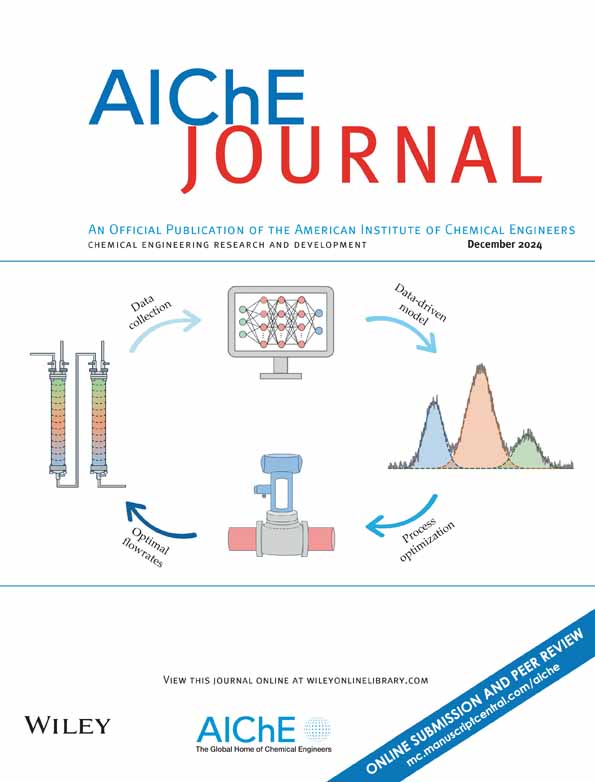A unified theory for gas–particle flow stress with particle friction and interstitial fluid effects
IF 3.5
3区 工程技术
Q2 ENGINEERING, CHEMICAL
引用次数: 0
Abstract
This article presents a unified theory that considers both particle friction and interstitial fluid effects for simulating gas–particle flow stress. For the first time, we proposed kinetic theory‐based solid stress equations that can simultaneously take into consideration the interstitial fluid effect at low solid volume fraction and the friction effect at high solid volume fraction. A smooth transition between these regimes was realized using the inertial number model. We validated the theory with experimental data from a spouted bed and a riser and showed the advantages of our theory over some classical kinetic theory models (e.g., Lun, Agrawal, and GTSH model). The results show that the solid volume fraction at the riser inlet and the particle velocity in spouted beds are more accurately predicted by the new model. Furthermore, the influence of interstitial fluid effects on particle flow is more pronounced in the riser than in the spouted bed.含颗粒摩擦和间隙流体效应的气粒流动应力的统一理论
本文提出了一个统一的理论,考虑颗粒摩擦和间隙流体效应来模拟气-颗粒流动应力。我们首次提出了基于动力学理论的固体应力方程,该方程可以同时考虑低固体体积分数时的间隙流体效应和高固体体积分数时的摩擦效应。利用惯性数模型实现了两种状态之间的平滑过渡。我们用喷流床和立管的实验数据验证了该理论,并证明了我们的理论比一些经典的动力学理论模型(例如,Lun, Agrawal和GTSH模型)的优势。结果表明,该模型能较准确地预测提升管入口固体体积分数和喷淋床内颗粒速度。此外,间隙流体效应对颗粒流动的影响在提升管内比在喷淋床内更为明显。
本文章由计算机程序翻译,如有差异,请以英文原文为准。
求助全文
约1分钟内获得全文
求助全文
来源期刊

AIChE Journal
工程技术-工程:化工
CiteScore
7.10
自引率
10.80%
发文量
411
审稿时长
3.6 months
期刊介绍:
The AIChE Journal is the premier research monthly in chemical engineering and related fields. This peer-reviewed and broad-based journal reports on the most important and latest technological advances in core areas of chemical engineering as well as in other relevant engineering disciplines. To keep abreast with the progressive outlook of the profession, the Journal has been expanding the scope of its editorial contents to include such fast developing areas as biotechnology, electrochemical engineering, and environmental engineering.
The AIChE Journal is indeed the global communications vehicle for the world-renowned researchers to exchange top-notch research findings with one another. Subscribing to the AIChE Journal is like having immediate access to nine topical journals in the field.
Articles are categorized according to the following topical areas:
Biomolecular Engineering, Bioengineering, Biochemicals, Biofuels, and Food
Inorganic Materials: Synthesis and Processing
Particle Technology and Fluidization
Process Systems Engineering
Reaction Engineering, Kinetics and Catalysis
Separations: Materials, Devices and Processes
Soft Materials: Synthesis, Processing and Products
Thermodynamics and Molecular-Scale Phenomena
Transport Phenomena and Fluid Mechanics.
 求助内容:
求助内容: 应助结果提醒方式:
应助结果提醒方式:


